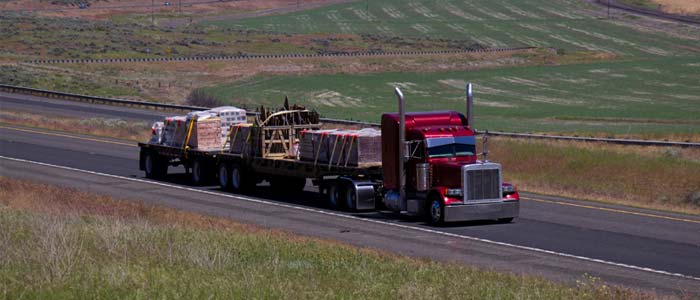
According to Trailer/Body Builders, failure to properly secure cargo is the fourth leading commercial vehicle violation that leads to trucks being placed in Out-of-Service (OOS). Unsecured cargo can be damaged during transit, damage the trailer it’s in, and even fall off and damage surrounding vehicles. These tips will help you secure your load, reducing damage, injuries and violation of regulations.
Using Tie-Downs
A covered trailer by itself isn’t enough to secure loads. Check the load capacity of your tie-downs, making sure they can handle the load they’re securing. Unmarked tie-downs meet FMCSA regulations, but you must assume that the working load limit is the lowest for its category. For example, a welded steel chain can be assumed to only be as strong as Grade 30 proof coil chain. If you see your chains or straps are worn or damaged, replace them.
Federal Motor Carrier Safety Administration (FMCSA) regulations require one strap for items that are 5 feet in length or less. However, for greater security, you should use at least two straps for every piece of cargo. Adding another strap every 10 feet for long items reduces shifting. Placing the load against the bulkhead can keep it from shifting during panic stops.
Dealing With Odd Loads
Sometimes, the FMCSA regulations won’t work with the load you’re carrying. There is an exemption to FMCSA rules for unusual loads, including girders, machine equipment and large fabricated structures. Instead, trailers and tie-down equipment must remain secure at a set of g-force loads established by the organization. When in doubt, talk to the people who set up the trailer. They can tell you what to look for to keep your cargo secure.
Distributing Weight in Your Trailer
Weight distribution is important for the stability of your trailer and the goods it carries. Ideally, 60% of the cargo weight should be ahead of the front axle to load the tongue. This load should be even left-to-right to keep the trailer from pulling in one direction. Even weight distribution reduces the chance of damaging or stressing critical areas of the trailer.
Keeping Your Load Secure On the Road
Check the load periodically. Items can shift while you’re driving down the road. Correcting this movement can keep items from falling and being damaged. You should also check your straps, as they can be shaken loose after hours of being vibrated and shaken by the road.







